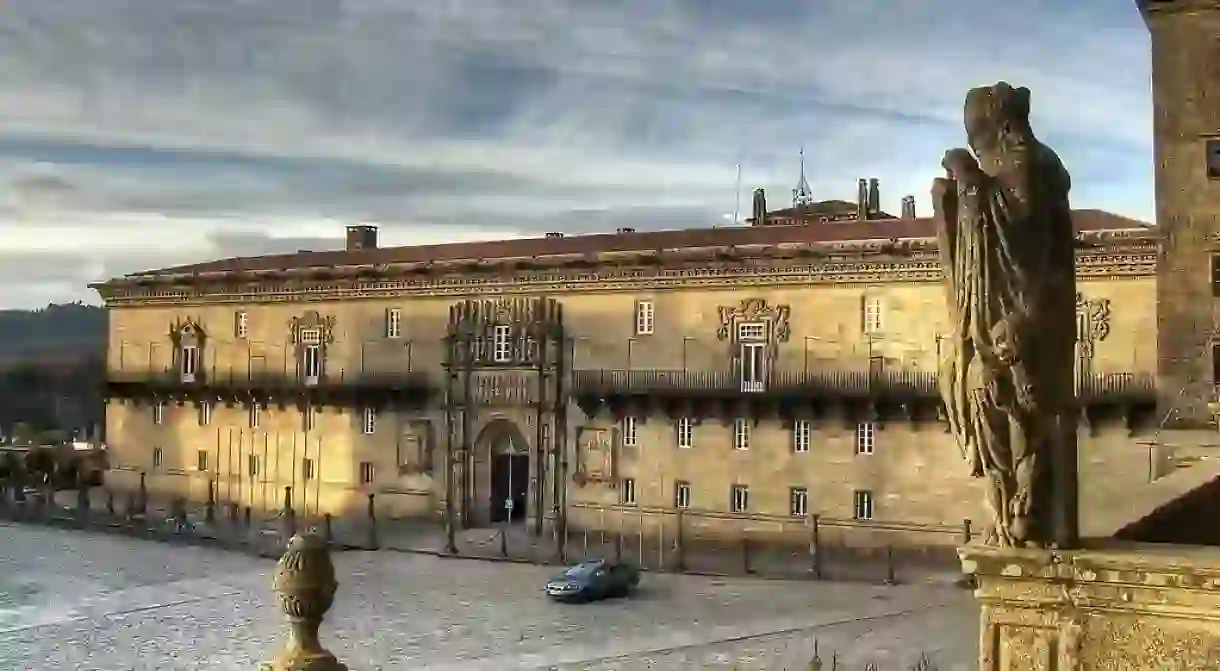A Tour of Santiago De Compostela's Most Impressive Monuments

The pilgrim city of Santiago de Compostela in northern Spain‘s Galicia region is filled with historic monuments, from churches and cathedrals, through to monasteries and palaces. Whether you’re in town for a short break or want to explore the city in depth, here’s our guide to some of its most impressive structures.
Cathedral
The Santiago de Compostela Cathedral is without a doubt the city’s most impressive sight, and one that thousands of pilgrims trek for hundreds of miles to see on the Camino de Santiago. Construction on the cathedral began in 1075, during the reign of Alfonso VI, as a place to house the remains of the apostle Santiago (also known as Saint James). It features a mix of Romanesque, Gothic, Baroque, Plateresque and Neoclassical styles.
Praza do Obradoiro, Santiago de Compostela, Spain, +34 981 58 35 48

Monasterio de San Martín Pinario
Founded in the 10th century by a group of Benedictine monks, after the discovery of the remains of Saint James, the monastery is the second-most important piece of Baroque architecture in Galicia, after the Santiago de Compostela Cathedral. The monastery’s church was designed by a number of different architects throughout the years – Portuguese architect Mateo López created the initial designs, while Bartolomé Fernández Lechuga from Granada constructed the large dome and spectacular interior. Today it’s a museum, as well as a working church.
Praza da Inmaculada, 5, Santiago de Compostela, Spain, +34 981 58 30 08

Hostal dos Reis Católicos
This magnificent building sits on the same square as the Santiago de Compostela Cathedral, and was commissioned by the Catholic Monarchs in 1501 as a hospital for sick pilgrims who walked the Camino de Santiago. The main building was designed by royal architect Enrique Egás, while the intricate façade, with carved figurines, was designed by French architects Martín de Blas and Gullén de Colás. Today the building is the luxurious five-star Hotel Parador, complete with period furniture and four-poster beds.

Convento de San Paio de Antealtares
While the original building was ordered to be constructed by Alfonso II in the 11th century, to house the Benedictine monks who would look after the remains of Saint James, it was virtually destroyed in later years and was entirely rebuilt during the 17th and 18th centuries. It features an image of San Paio (a child martyr from Córdoba) on the façade, and today houses the Museum of Sacred Art.
Rúa de San Paio de Antealtares, 23, Santiago de Compostela, Spain, +34 981 56 06 23

Pazo de Bendaña
Built in the Baroque style in the mid 18th-century, the Pazo de Bendaña was a city palace, created for the Marquis of Bendaña. Designed by architect Clemente Fernández Sarela, it features intricate wrought-iron balconies, the marquis’ coat of arms at the top, and a statue of Atlas holding up the world. Today, the palace houses the museum of the surrealist Galician artist Eugenio Granell.

Convento de San Domingos de Bonaval
Built in the 14th century, the church of San Domingos de Bonaval has both Gothic and Baroque influences. It has three naves surrounded by arches and charming chapel with a ribbed vault. Inside are four Gothic tombs, as well as the burial sites of important Galicians such as Rosalía de Castro, Alfredo Brañas and Ramón Cabanillas. The convent itself dates back to 1220 and was founded by Santo Domingo de Guzmán, although the current building was rebuilt in the 17th century by Domingo de Andrade, who included an elegant spiral staircase. Today the building houses the Museo do Pobo Galego (the Museum of Galician People).

Casa da Parra
The Casa da Parra was designed by Domingo de Andrade (who also designed the above Convent San Domingos de Bonaval) in the 17th century. It is one of the most charming buildings on the square because of its pretty balconies and large upper-floor windows, which were added later in the 20th century, as well as the grape vines climbing up the sides. Today it houses an exhibition hall, as well as a café.














